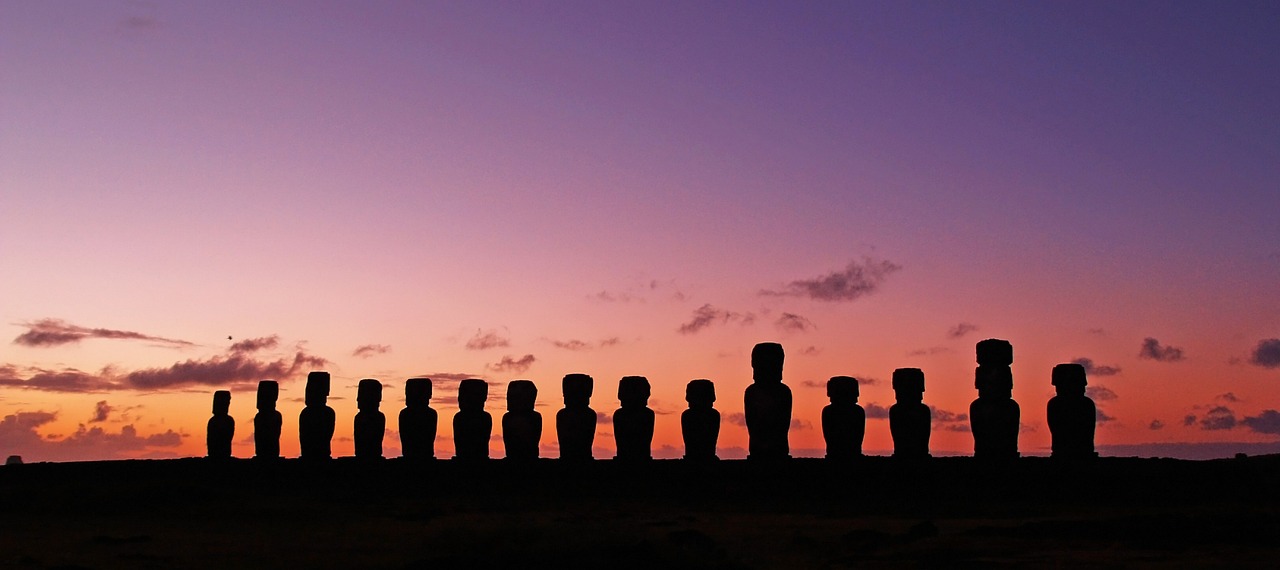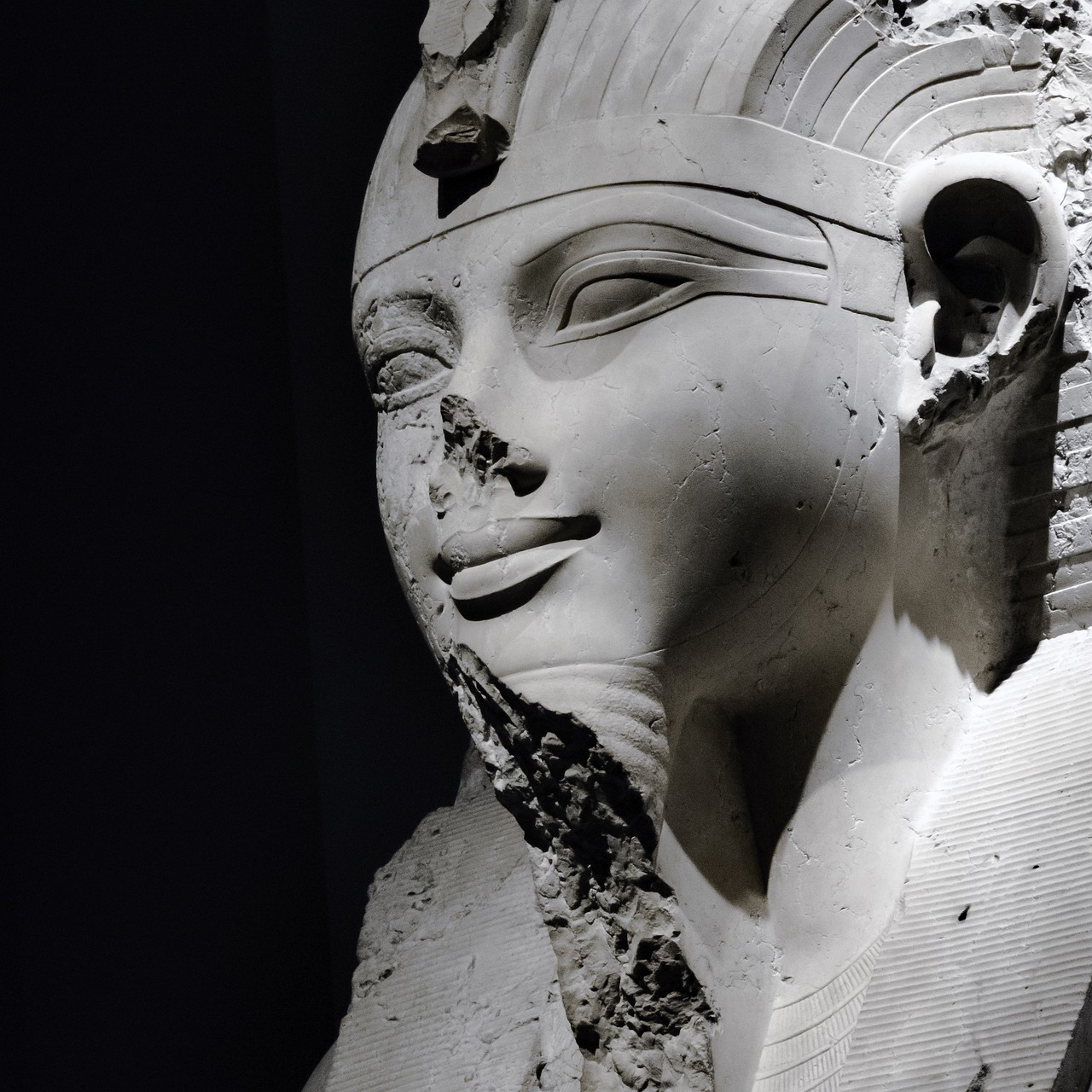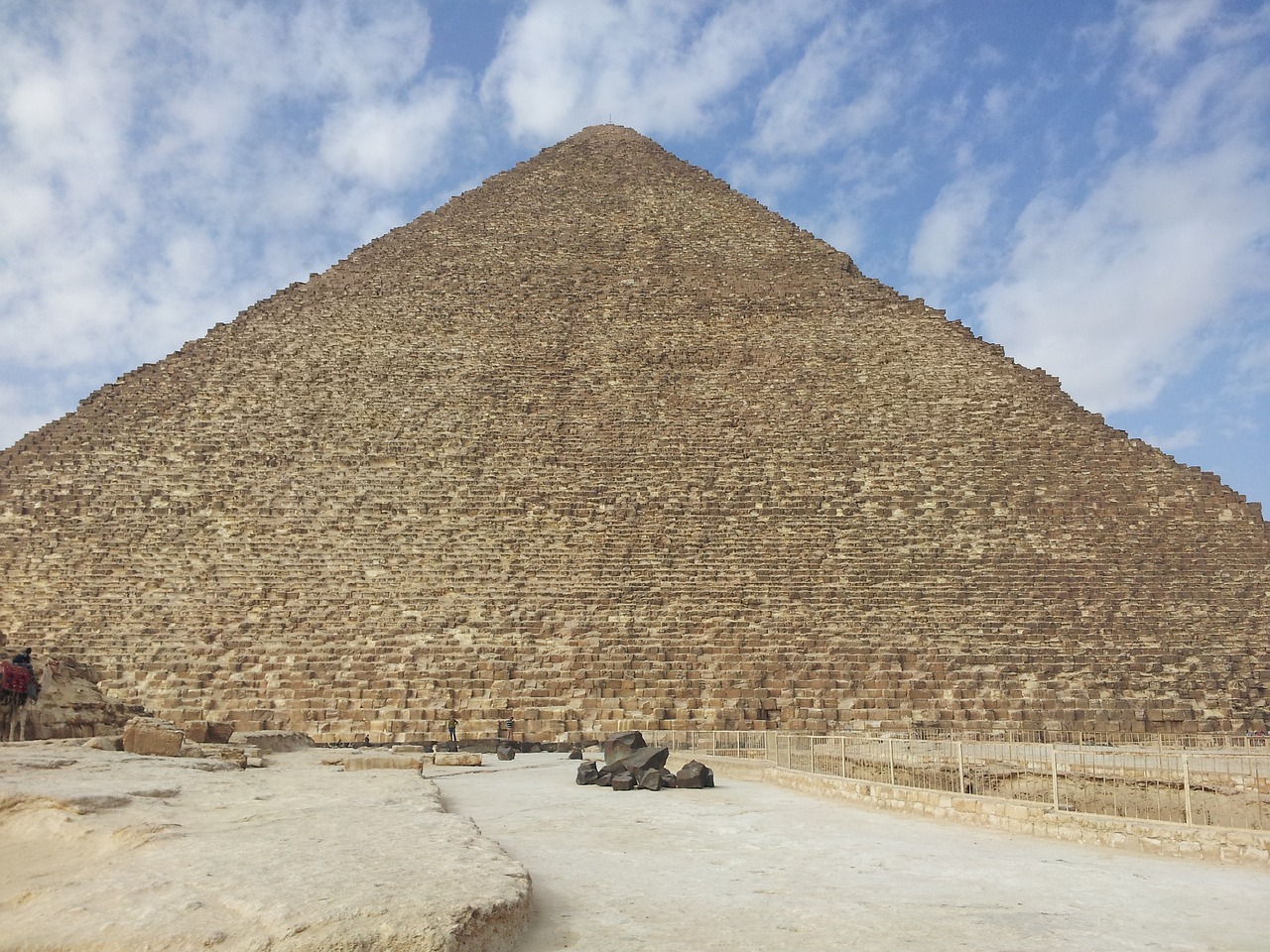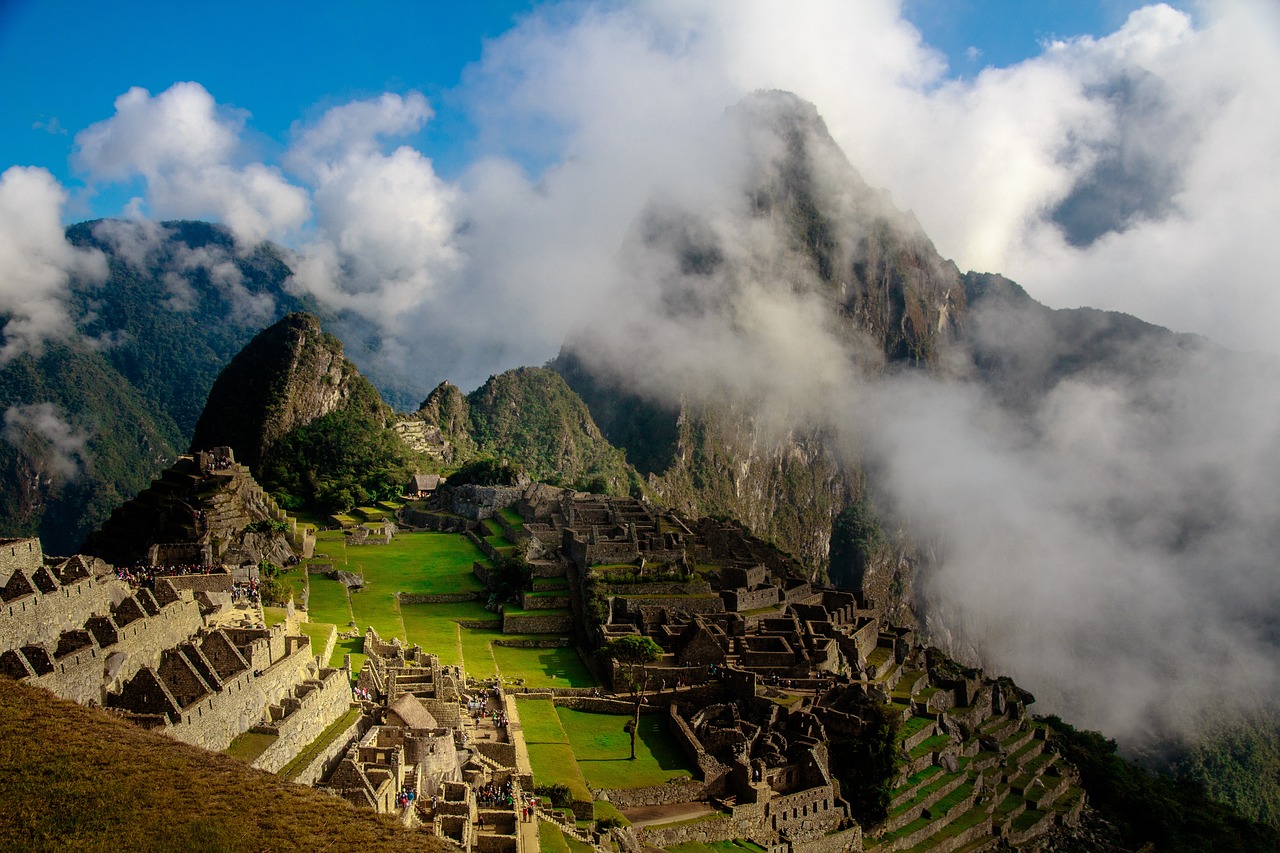The Secrets of the Ancient Egyptians' Spiritual Practices
Have you ever wondered about the mystical world of the ancient Egyptians and their profound spiritual practices? Step into the realm of the past and uncover the secrets that shrouded their beliefs, rituals, and connection to the divine. The ancient Egyptians' spiritual practices were not merely religious ceremonies but a way of life deeply intertwined with their daily existence and understanding of the cosmos.

Beliefs and Deities
Delve into the mystical world of ancient Egypt, where spirituality intertwined with daily life in ways that still captivate us today. The ancient Egyptians' spiritual practices were deeply rooted in their beliefs, rituals, and connection to a vast pantheon of gods and goddesses. Let's unravel the mysteries that shrouded their spiritual world and explore the secrets that have endured through the sands of time.
The ancient Egyptians believed in a complex and diverse pantheon of gods and goddesses, each with their own unique attributes and powers. From the powerful sun god Ra to the wise goddess Isis, these deities played a central role in every aspect of Egyptian life. They were not distant figures but rather beings intimately involved in the daily affairs of both mortals and the divine realm.
These deities were not just symbols or stories but living entities that guided and protected the people. The Egyptians sought to honor and appease their gods through elaborate rituals, offerings, and prayers, believing that maintaining a harmonious relationship with the divine was essential for prosperity and spiritual well-being.
Their beliefs were not confined to temples but permeated every aspect of society, from the pharaoh's rule to the daily lives of farmers and artisans. The gods were not distant figures but companions on the journey of life, offering guidance, protection, and blessings to those who worshipped them with reverence and devotion.

Rituals and Ceremonies
Step into the mystical world of ancient Egypt and witness the awe-inspiring rituals and ceremonies that were an integral part of their spiritual practices. The ancient Egyptians believed in the power of these sacred rituals to maintain harmony between the earthly realm and the divine forces that governed their lives.
Imagine the grandeur of the ceremonies held in the magnificent temples dedicated to the gods and goddesses. The priests and priestesses, adorned in elaborate ceremonial attire, performed intricate rites to honor the deities and seek their blessings. These rituals were not merely formalities but deeply meaningful acts of devotion and reverence.
One of the most significant ceremonies was the ritual of the Opening of the Mouth, where the priest would symbolically open the mouth of a mummy to ensure the deceased could speak and partake in the afterlife. This ritual was believed to be essential for the deceased to continue their journey in the spiritual realm.
The ancient Egyptians also held festivals and processions to celebrate the cycles of nature, such as the annual flooding of the Nile, which was vital for agriculture and sustenance. These festive occasions were marked by music, dance, offerings, and prayers to honor the gods for their benevolence.
Moreover, the act of purification through rituals like the 'Ritual of the Senet Game' symbolized the cleansing of the soul and the removal of impurities, allowing individuals to approach the divine with a pure heart and mind.
Each ceremony was meticulously planned and executed with precision, guided by the belief that the proper performance of these rituals would ensure the favor of the gods and the protection of the community. The ancient Egyptians viewed these ceremonies as a bridge between the mortal world and the divine, a sacred connection that sustained their spiritual beliefs and practices.
Through these rituals and ceremonies, the ancient Egyptians sought to maintain cosmic order, honor their deities, and commune with the spiritual forces that governed the universe. The echoes of these ancient practices still resonate in the modern world, reminding us of the enduring power of ritual and ceremony in connecting with the divine.

Sacred Sites and Temples
When delving into the mystical world of ancient Egyptian spiritual practices, one cannot overlook the profound significance of sacred sites and temples in their culture. These monumental structures were not merely architectural marvels but served as gateways to the divine, connecting the earthly realm with the spiritual one.
Imagine standing in front of the majestic pyramids of Giza, feeling the weight of history and spirituality bearing down on you. These monumental structures were not just tombs for the pharaohs but were believed to be a link between the mortal world and the realm of the gods. The intricate carvings and hieroglyphs adorning the temple walls were not mere decorations but sacred symbols carrying deep spiritual meanings.
The temples dedicated to various deities across Egypt were not just places of worship but centers of spiritual energy. The priests and priestesses who inhabited these sacred spaces were revered for their connection to the divine and their ability to commune with the gods on behalf of the people. Rituals and ceremonies performed within these temples were elaborate and precise, aimed at honoring the gods and maintaining cosmic balance.
Each sacred site and temple had its own unique significance and purpose. The Temple of Karnak, for example, dedicated to the god Amun, was a vast complex of sanctuaries, chapels, and obelisks, reflecting the grandeur and power of the deity it honored. On the other hand, the Temple of Abu Simbel, with its colossal statues of Ramses II, was a testament to the pharaoh's divine status and eternal presence.
These sacred sites were not only places of worship but also centers of education, healing, and prophecy. The walls of the temples were adorned with intricate hieroglyphs and symbolic imagery, serving as a repository of knowledge and wisdom. The priests and priestesses who resided within these hallowed walls were not only spiritual guides but also healers, scholars, and advisors to the pharaoh.
Visiting these sacred sites and temples today, one can still feel the echoes of ancient prayers and rituals, reverberating through time. The legacy of these mystical places continues to inspire awe and wonder, reminding us of the profound connection between the material and spiritual worlds in the ancient Egyptian belief system.

Symbolism and Mythology
The ancient Egyptians were masters of symbolism and mythology, weaving intricate stories and powerful symbols into their spiritual practices. Every aspect of Egyptian life was imbued with meaning, from the hieroglyphs adorning temple walls to the rituals performed in honor of the gods. The rich mythology of the Egyptians provided a framework for understanding the world and one's place in it, with stories of creation, gods and goddesses, and the afterlife shaping their beliefs and practices.
Symbolism played a crucial role in Egyptian spirituality, with each god and goddess representing different aspects of the natural world and human experience. For example, the sun god Ra symbolized light, warmth, and life, while the goddess Isis represented motherhood, magic, and healing. These symbols were not just abstract concepts but living forces that guided and influenced the daily lives of the ancient Egyptians.
Mythology served as a powerful tool for conveying spiritual truths and moral lessons, with stories of gods and heroes illustrating the importance of virtues such as courage, wisdom, and justice. The myth of Osiris, Isis, and Horus, for instance, symbolized the cycle of life, death, and rebirth, offering hope for eternal life and the promise of resurrection in the afterlife.
Moreover, the Egyptians believed that the world was filled with hidden meanings and connections, with symbols serving as a bridge between the earthly realm and the divine. Hieroglyphs, the sacred writing system of the Egyptians, were not just a means of communication but a form of divine language, with each symbol carrying layers of meaning and significance.
Through the intricate tapestry of symbolism and mythology, the ancient Egyptians sought to understand the mysteries of the universe and their place within it. Their spiritual practices were not just rituals performed out of tradition but profound expressions of their beliefs, hopes, and fears, connecting them to the divine forces that governed the cosmos.

Mummification and the Afterlife
When delving into the intriguing world of ancient Egyptian spiritual practices, one cannot overlook the fascinating ritual of mummification and its deep connection to the concept of the afterlife. The ancient Egyptians believed in an afterlife where the soul would embark on a journey to the realm of the dead, guided by various gods and goddesses. To ensure a successful transition to the afterlife, they developed the elaborate process of mummification, which aimed to preserve the body for eternity.
The process of mummification was a meticulous and sacred procedure that involved several steps. Firstly, the internal organs were removed and preserved in canopic jars, while the body was dehydrated using natron salts. The body was then wrapped in linen bandages, with amulets and charms placed between the layers to protect the deceased in the afterlife. The final step involved the placement of the mummy in a decorated coffin, often accompanied by funerary goods and inscriptions to guide the soul on its journey.
Mummification was not only a physical preservation method but also a spiritual practice deeply rooted in Egyptian beliefs about the afterlife. The Egyptians believed that the soul needed a preserved body to recognize and reunite with in the afterlife, ensuring eternal existence and the possibility of enjoying the pleasures of the afterlife. This intricate process of mummification reflected the Egyptians' reverence for life, death, and the cyclical nature of existence.
Moreover, the concept of the afterlife played a central role in ancient Egyptian spirituality, shaping their beliefs, rituals, and daily practices. The Egyptians viewed death not as an end but as a transition to a new phase of existence, where the deceased would continue their journey guided by the gods. The elaborate tombs, burial rituals, and funerary texts all aimed to facilitate a smooth passage to the afterlife and ensure the eternal well-being of the deceased.
Through the practice of mummification and their beliefs about the afterlife, the ancient Egyptians sought to defy the passage of time and achieve a form of immortality. The meticulous care taken in preserving the body and the elaborate rituals surrounding death reflected their profound spiritual convictions and their unwavering faith in the continuity of life beyond the earthly realm.

Astronomy and Cosmology
The ancient Egyptians had a profound connection between their spiritual beliefs and the cosmos, with astronomy and cosmology playing a central role in their religious practices. Imagine standing in the vast desert under the starry night sky, feeling the mystical presence of the celestial bodies above. For the Egyptians, the movements of the sun, moon, and stars were not just natural phenomena but divine messages from the gods.
They meticulously observed the heavens, charting the movements of celestial bodies and creating a complex calendar that aligned with the cycles of the stars. The alignment of the pyramids with the cardinal points and the solstices is a testament to their advanced astronomical knowledge and spiritual significance. It was believed that the alignment of these monumental structures with the cosmos facilitated the pharaoh's journey to the afterlife.
Moreover, the Egyptians believed in the concept of Ma'at, the cosmic order that governed the universe. They saw the stars as symbols of the gods and goddesses, each constellation representing a deity with its own significance and influence on earthly affairs. The movements of the stars were seen as reflections of the gods' will, guiding both the natural world and human destiny.
Through their understanding of the cosmos, the ancient Egyptians sought to harmonize their lives with the celestial forces, believing that by aligning themselves with the rhythms of the universe, they could achieve spiritual enlightenment and eternal life. Astronomy and cosmology were not just scientific pursuits but sacred pathways to divine knowledge and cosmic harmony.

Divination and Magic
Delving into the mystical world of ancient Egypt unveils a tapestry of spiritual practices that have fascinated and intrigued generations. The ancient Egyptians' connection to the divine was deeply ingrained in their daily lives, shaping their beliefs, rituals, and understanding of the universe. Let's embark on a journey to uncover the secrets of their spiritual practices and the profound impact they had on Egyptian society.
Within the realm of ancient Egyptian spirituality, divination and magic played a significant role in seeking guidance, protection, and healing. The practice of divination involved various methods such as interpreting dreams, reading omens, and consulting oracles to gain insights into the future and make important decisions. These divinatory practices were intertwined with the belief that the gods communicated with mortals through signs and symbols, guiding them on their earthly journey.
Moreover, magic held a prominent place in Egyptian spiritual practices, with rituals and spells being performed to harness supernatural forces for specific purposes. Whether it was invoking deities for blessings, casting spells for protection, or conducting ceremonies for healing, magic was seen as a powerful tool to influence the natural and spiritual realms. The ancient Egyptians believed in the interconnectedness of the physical and metaphysical worlds, where magic served as a bridge between the seen and unseen forces at play.
Through the intricate practices of divination and magic, the ancient Egyptians sought to navigate the complexities of life, commune with the divine, and tap into the cosmic energies that governed the universe. These mystical arts were not only a means of seeking answers and solutions but also a way to connect with the spiritual forces that shaped their existence.
1. How did ancient Egyptians practice divination?
2. What role did magic play in Egyptian spirituality?
3. Were there specific gods associated with divination and magic?
4. What were some common divinatory tools used by the ancient Egyptians?
5. How has the legacy of Egyptian divination and magic influenced modern occult practices?

Hieroglyphs and Sacred Texts
Hieroglyphs and sacred texts played a crucial role in preserving the wisdom and teachings of ancient Egyptian spiritual practices. The intricate system of hieroglyphs, consisting of symbols and images, served as a means of communication for both mundane and sacred purposes. These sacred texts were not only written on papyrus scrolls but also adorned the walls of temples and tombs, imparting spiritual knowledge to those who could decipher them. The hieroglyphs were believed to hold divine power, with each symbol representing a concept, object, or sound.
The Book of the Dead, also known as the Book of Coming Forth by Day, is one of the most famous sacred texts in ancient Egyptian culture. This funerary text contained spells, incantations, and instructions to guide the deceased through the afterlife. It was believed that by reciting the spells correctly, the soul of the deceased would successfully navigate the perilous journey to the realm of Osiris, the god of the afterlife.
Moreover, the Pyramid Texts, inscribed on the walls of pyramids, provided guidance for the pharaohs in their transition to the afterlife. These texts contained prayers, hymns, and rituals to ensure the ruler's successful ascension to the heavens and eventual union with the sun god, Ra. The sacred texts were not only a source of spiritual guidance but also served as a link between the earthly realm and the divine, connecting the living with the gods and ancestors.
The decipherment of hieroglyphs in the modern era has unlocked a wealth of knowledge about ancient Egyptian spirituality and culture. Scholars and archaeologists continue to study these sacred texts, unraveling the mysteries of the past and gaining insights into the beliefs and practices of the ancient Egyptians. The legacy of hieroglyphs and sacred texts endures as a testament to the profound spiritual wisdom of this ancient civilization, inspiring awe and fascination in people around the world.

Legacy and Influence
The legacy of ancient Egyptian spiritual practices is undeniable, permeating through time to influence modern spirituality, art, and culture in profound ways. The mystical allure of Egyptian beliefs and rituals continues to captivate individuals worldwide, transcending borders and generations. From the majestic pyramids that stand as a testament to their spiritual devotion to the intricate hieroglyphs that encode ancient wisdom, the legacy of the Egyptians endures as a beacon of mysticism and wonder.
One cannot overlook the impact of Egyptian spirituality on modern religious practices and beliefs. The reverence for deities, the belief in an afterlife, and the intricate rituals performed to honor the divine are echoes of the ancient Egyptian traditions that have seeped into various spiritual ideologies. The concept of mummification, once a sacred ritual to ensure the soul's journey to the afterlife, has left a lasting impression on how we perceive life and death.
Moreover, the influence of Egyptian symbolism and mythology can be seen in art, architecture, and literature across the globe. The enigmatic symbols and stories of gods and goddesses have inspired countless artists and writers, infusing their creations with a sense of mysticism and depth. The rich tapestry of Egyptian mythology continues to spark the imagination and fuel creativity in diverse fields.
Furthermore, the legacy of Egyptian spirituality extends to the realm of science and academia. The study of hieroglyphs, sacred texts, and ancient practices has provided invaluable insights into the beliefs and customs of the Egyptians, shedding light on their worldview and spiritual journey. Scholars and researchers continue to unravel the mysteries of ancient Egypt, uncovering new layers of meaning and significance.
In conclusion, the legacy and influence of ancient Egyptian spiritual practices are profound and far-reaching, leaving an indelible mark on human history and culture. As we delve deeper into the mysteries of the past, we are reminded of the enduring power of spirituality and the timeless quest for meaning and connection with the divine.
Frequently Asked Questions
- What were the main beliefs of the ancient Egyptians?
The ancient Egyptians believed in a pantheon of gods and goddesses who governed different aspects of life. They worshipped these deities through rituals and ceremonies to ensure harmony and balance in the world.
- How did the ancient Egyptians view the afterlife?
The ancient Egyptians believed in an afterlife where the soul would journey through the underworld and be judged before reaching the eternal paradise. Mummification and burial practices were essential for a successful transition to the afterlife.
- What role did sacred sites and temples play in Egyptian spirituality?
Sacred sites and temples were considered the dwelling places of the gods and were essential for performing rituals and ceremonies. They served as centers of spiritual and religious activities, connecting the earthly realm with the divine.
- How did astronomy influence Egyptian spiritual practices?
Astronomy played a significant role in Egyptian spirituality, guiding their religious calendar and beliefs about the cosmos. The alignment of temples with celestial bodies and the tracking of stars were integral to their spiritual rituals and ceremonies.
- What was the significance of hieroglyphs and sacred texts in Egyptian spirituality?
Hieroglyphs and sacred texts were used to record religious teachings, myths, and rituals. They were considered sacred and were instrumental in preserving the wisdom of Egyptian spiritual practices for future generations.



















